Kinds of Hats in Pakistan: Tradition, Identity, and Style
When was the last time you noticed someone’s hat and thought about what it meant?
In Pakistan, a hat isn’t just something to shield you from the sun; it’s a statement, a badge of heritage, and sometimes even a silent introduction of who you are. Yet, here’s the problem: we rarely pay attention to it. We speak about shalwar kameez, waistcoats, dupattas, bridal wear, but the headwear? Often ignored. This silence makes us forget that for centuries, men across our regions have used hats to represent their tribe, their pride, and their belief. Without them, the story of our clothing is incomplete.
The solution is surprisingly simple: bring back the spotlight to the many kinds of hats in Pakistan. These aren’t just cultural ornaments locked in dusty cupboards; they’re alive, still worn daily in Sindh’s bustling markets, in Chitral’s snowy valleys, in Punjab’s golden fields, and in the political heart of Islamabad. Each hat speaks. The Sindhi topi whispers of intricate embroidery done patiently by hand. The Pakol, rolled thick, keeps northern men warm through bitter winters. The Jinnah cap, sharp and textured, recalls the dignity of Pakistan’s founder. And the Balochi turban? It doesn’t just sit on the head; it towers, declaring strength and honor. If you’ve ever wanted to understand Pakistan’s diversity through something tangible, you need to start with its hats.
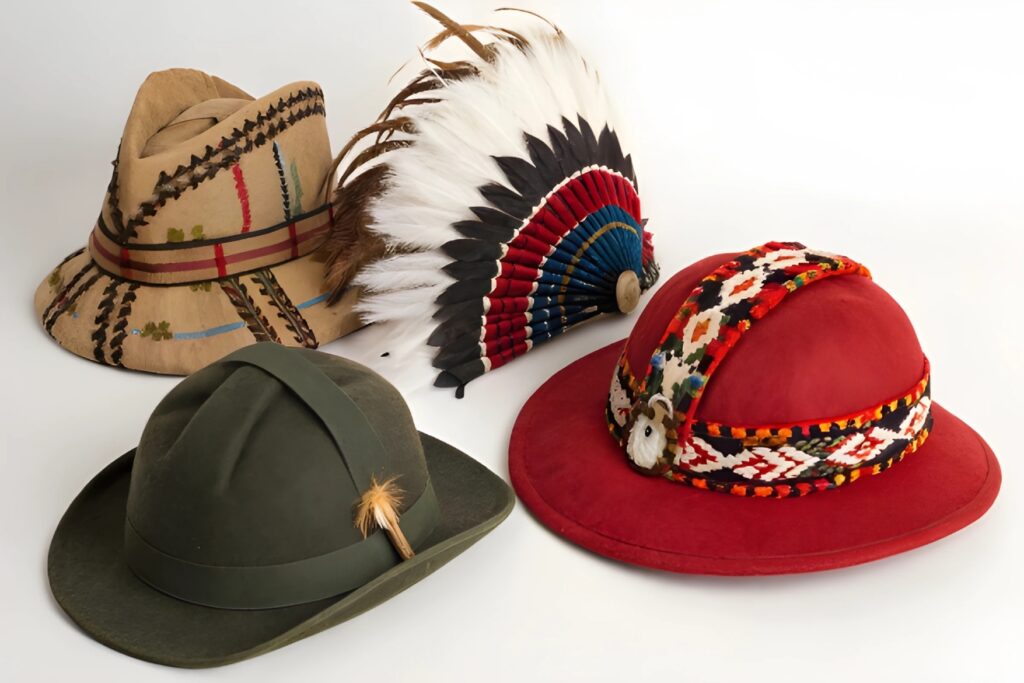
Why Hats Carry Weight in Our Culture
Walk through any Pakistani bazaar and you’ll see them: rows of hats displayed neatly, some plain, some sparkling with mirror work, others folded and piled high. These are not random fashion choices; they carry layers of meaning. Covering the head in this land has always stood for dignity. A man without his cap, especially in rural areas, might look incomplete.
- For Muslims, prayer caps are part of faith. They signal respect and humility before God.
- For tribes, hats separate one group from another. A Sindhi man doesn’t need to say he’s from Sindh, his topi says it first.
- For families, elders wear their headgear as a sign of wisdom. Children look up at their fathers, uncles, or grandfathers, remembering them with the hat they always wore.
- And for fashion? Yes, hats have quietly found a place in weddings, festivals, and even city streetwear.
This is why the kinds of hats in Pakistan are not just relics. They are living, breathing traditions that move with time.
The Many Kinds of Hats in Pakistan
Let’s take a closer look. Each province, each community, has its signature headwear. Together, they paint a map of the country.
1. Sindhi Topi
If you were on the day of Sindhi culture, you would have seen the colorful tradition flowing down the street that looks like rivers of culture decorated with Sindhi Topi and Ajrak. There are certainly a few more items that make the day so vibrant, but these two are the major ones. Of course, these are not only the colors but also the symbols of the day. If you hear the name Sindhi culture, what comes to your mind is the blanket and the head, and the face that has been half covered with Ajrak and Sindhi topi. So brightly woven with a mixture of red, blue, and white – the known colors of the culture – Sindhi Topi and Ajrak are the well-known and significant icons of the day. Rolls of ajraks are thrown over shoulders, and on every head is the Sindhi topi. People say it’s round, tight, and shining due to its embroidery so delicate that it looks like lace pieces, but this cap is the one that comes at once to heart and mind. The half-moon cut at the top of the front is just not a design, while it reveals that only part of the forehead is there, it also makes it a unique tope.
In most Sindhi homes, a topi is a gift that symbolizes utmost respect. Sometimes they spend days and weeks creating the masterpiece using material in different colors as blue, red, and black, and oftentimes adding one or two small mirrors there that brighten with the sun. To wear a Sindhi topi means to carry the pride and history of Sindh while exposing it to others.
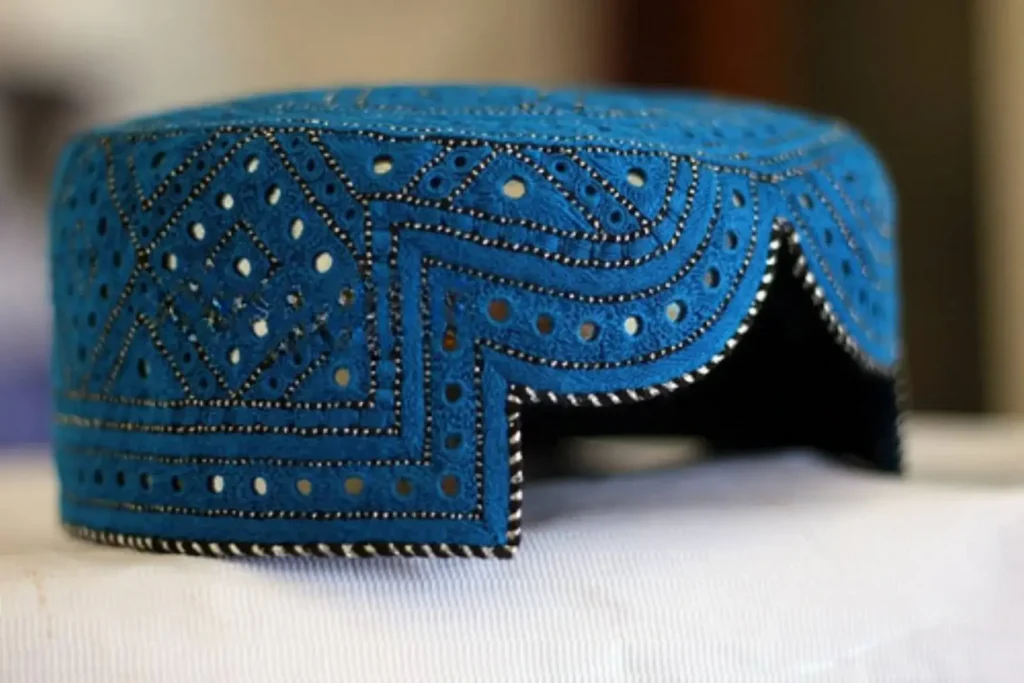
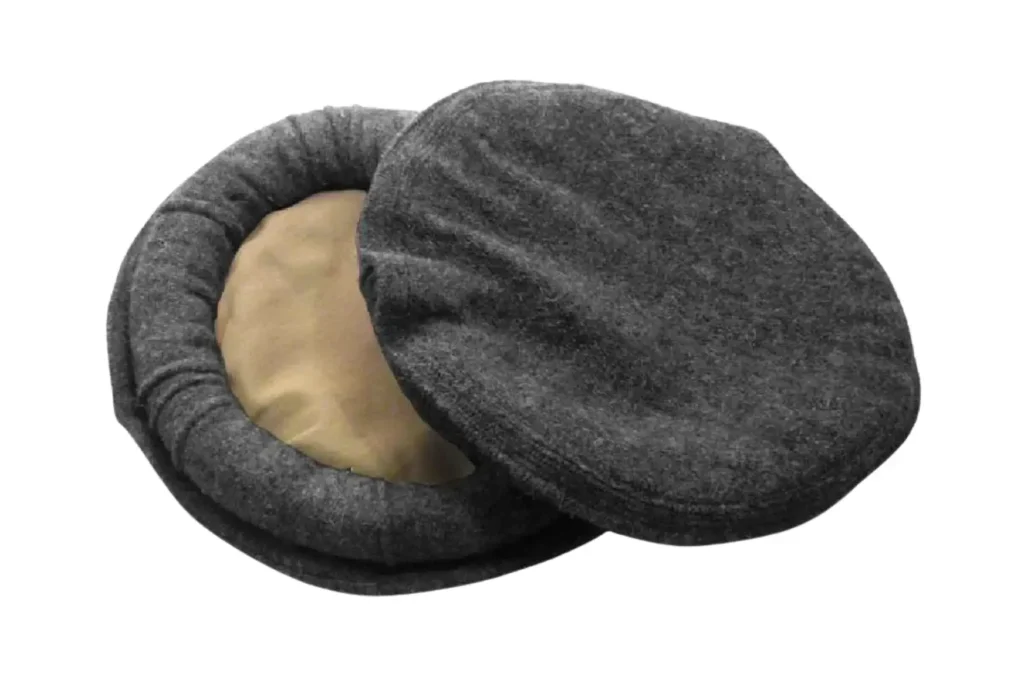
2. Pakol (Chitrali Cap)
This is the place in the North where the winter is said to be the harshest, and it is there that the Pakol is the most famous and the most affectionately worn headgear. It is made of wool and is soft and warm, and comes with a thick band that is rolled up and fits snugly around the forehead. You can barely smell the wool, which is a very raw and earthy smell that is simply comforting. The pakol is not a talking point of luxury, as it is most of the time acknowledged for the cold mountain or the sake of survival. The Pakol is a part of a man’s outfit used to keep the head and the face warm in the mountainous areas of northern Pakistan and Afghanistan. It is usually made of grey or brown wool and looks like a cap (called a Pakistan in Urdu)
If you still think of it as a winter headgear only, then let me remind you that the Pakol still is a hat with cultural credentials in the areas of Chitral, Gilgit, and Swat. It is always there in the festivals and celebrations, and is worn by those young men who like to look like the past and old men who live through the past. There are cream, grey, and brown colors mainly, which blend perfectly with the earthy colors of the valleys. The Pakol, which has become known as a popular cap in Afghanistan is what is one of the factors that make it a shared cultural symbol of the region, apart from the fact that it is from outside Pakistan.
3. The Balochi Turban
Drive into the deserts of Balochistan, and you’ll quickly notice something striking: the tall, elaborate turbans wrapped around men’s heads. Unlike other hats, the Balochi turban isn’t small or subtle. It’s grand. Sometimes the cloth used stretches up to ten meters, carefully wrapped layer after layer, until the headgear rises proudly above the wearer.
The turban in Baloch culture isn’t just fabric. It’s an honor. To see an elder adjusting his turban is to witness a ritual. It declares manhood, dignity, and status. And in the unforgiving desert sun, it doubles as protection. That’s the thing about the kinds of hats in Pakistan: they always carry both meaning and purpose.

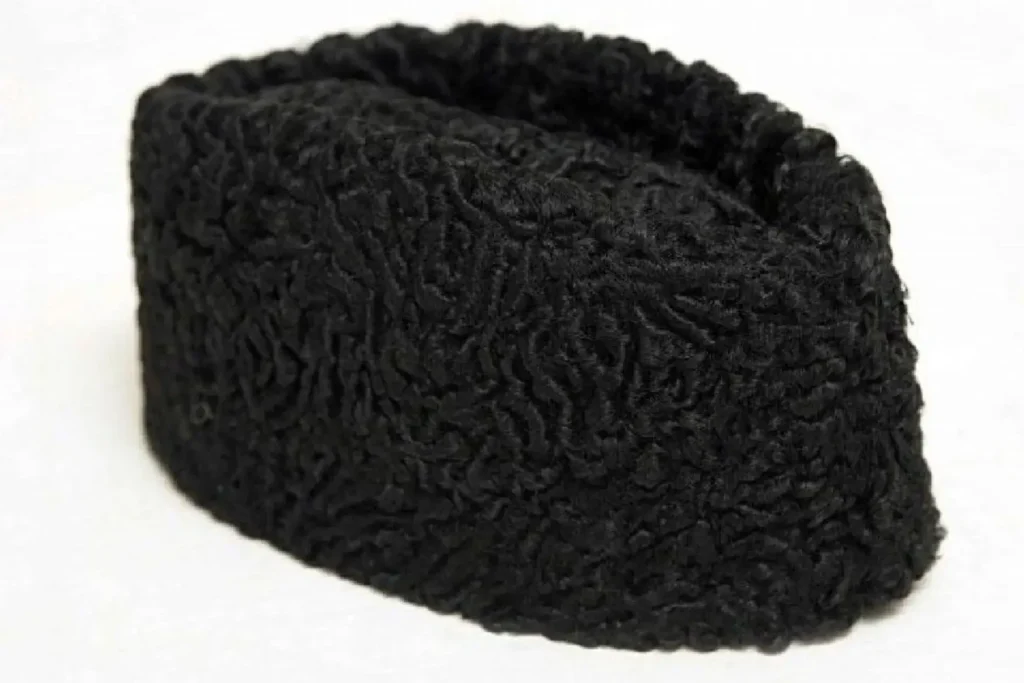
4. The Jinnah Cap (Karakul Cap)
Out of all kinds of hats in Pakistan, this is the one that has political and national symbolism to the highest extent. The Karakul cap, named after Quaid-e-Azam Muhammad Ali Jinnah, was simply not a part of the wardrobe anymore, but a national-level icon. This one is made from the wool of Karakul sheep and has a special shine that is almost like velvet in appearance but quite nice to the touch. If you glance at old pictures of Jinnah, with his sherwani and Karakul cap, it is very clear why it was so important. It was not only a cap but his character, his feature. Nowadays, the Jinnah cap is worn by men at formal events, weddings, and most of all on national days. Wearing it is like one is paying tribute to the past.
5. Modern Caps
Bearing in mind that Pakistan is not stuck in the past, you can find in the Sadar of Karachi or the Liberty Market of Lahore baseball caps, snapbacks, and even bucket hats. Teenagers and university students wear them daily, pairing them with jeans, t-shirts, or even shalwar kameez. Tradition might not be the base for these caps, but they surely show how global fashion finds the local wardrobes.
On top of that, these modern caps have been influenced by the traditional ones. It is possible you see a groom at a mehndi changing his sherwani turban into a modern cap or a young man wearing a baseball cap with traditional clothes. It is a reminder that the kinds of hats in Pakistan are not static; they are dynamic, and they always find new ways to be relevant.

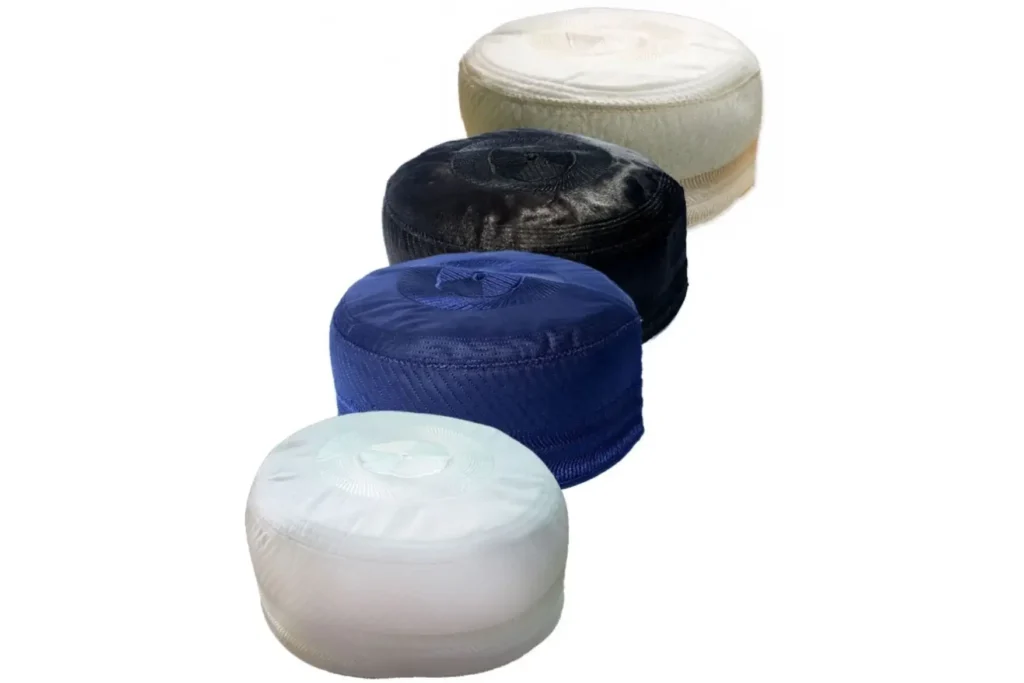
6. Prayer Caps (Topi or Taqiyah)
If you walk into a mosque in any part of Pakistan, you will see people lined up, and most of them are wearing simple white or slightly embroidered caps. They are probably the most common hats in the country. Usually made out of cotton, they can also be breathable and are worn during the daily prayers. On Eid, families frequently present each other with new prayer caps, which are sometimes more elaborate ones with embroidery or with a bit of golden thread.
Even though these caps are tiny, they signify a lot of piety. Regarding the kinds of hats in Pakistan, they are the ones that reflect on us that headwear here is not only a matter of culture but also of religion.
The Evolution of Hats
Tradition isn’t static, though. If you glance through old photographs of Pakistan in the 1950s, you’d mostly see Jinnah caps and pagri hats on men. Today, such hats are there, but in the different scenes, oftentimes accompanied by designer sherwanis, or a few wearers who are mostly younger people donning them to stay connected to their roots.
Most of the alterations are logical. The Pakol hat was specifically used to keep one warm during the Chitral winter when it was extremely cold. Presently, it is worn by the youth of cities such as Islamabad or Lahore at cultural festivals, not to provide heat, but rather to symbolize their association with the culture. By the same token, the Sindhi topi that was once only worn at formal events is now seen at student classrooms during the Sindhi Cultural Day, students wearing it as a matter of pride.
The hats in Pakistan have changed from being a necessity to an identity and currently to a fashion. It is a cycle of preservation and reinvention.
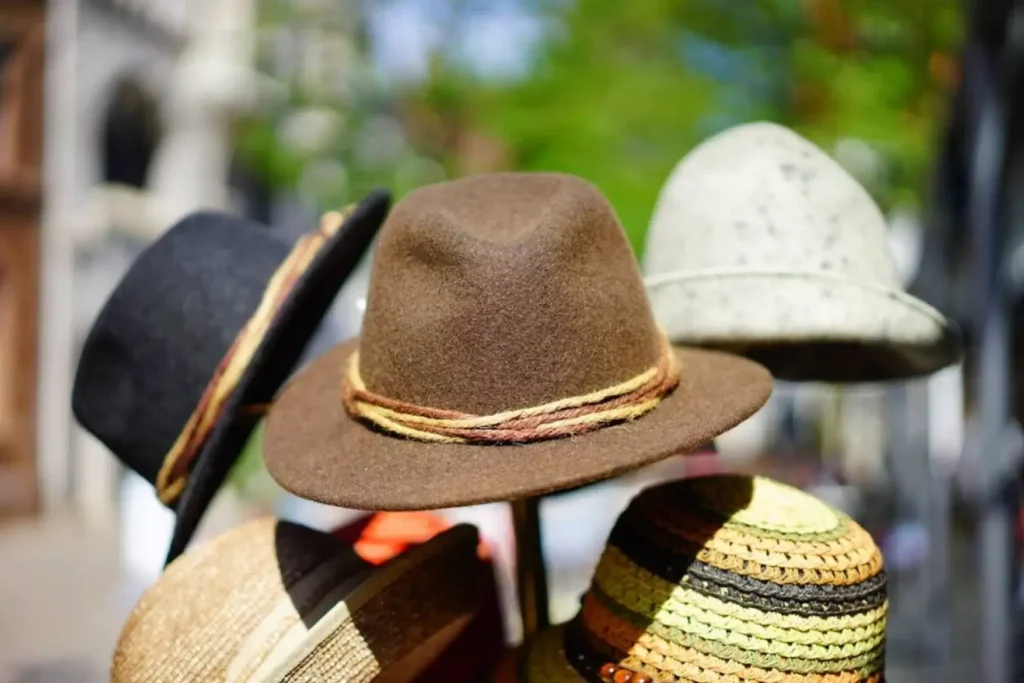
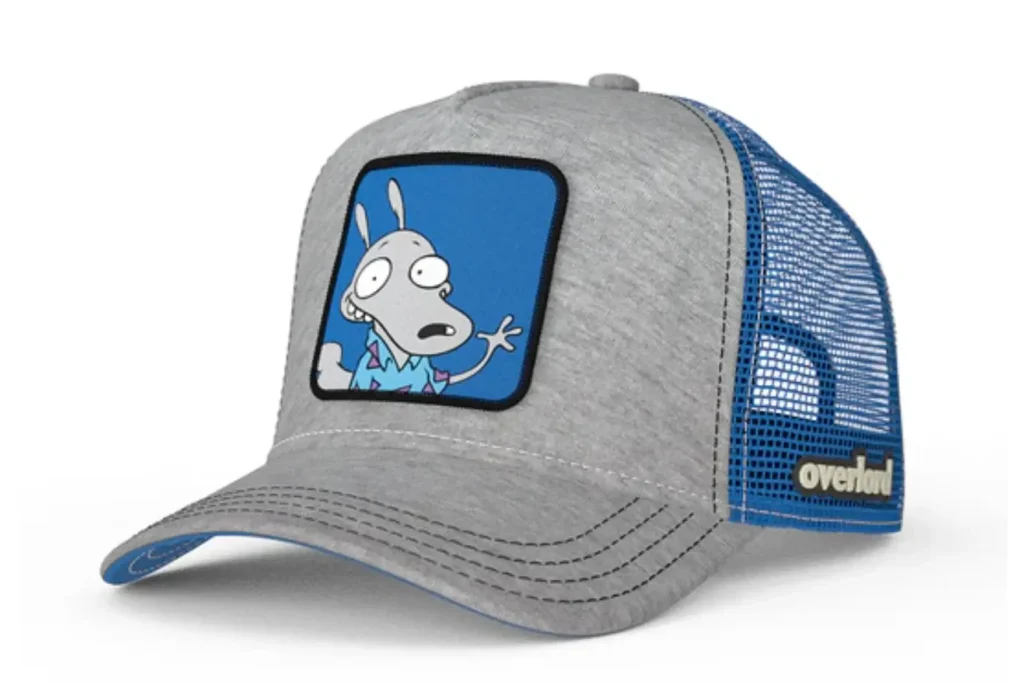
Hats in Modern Life
Do people still wear these hats every day? No, they wear them less than they used to. But the interesting thing is that every time there is a wedding, a festival, or a cricket match where culture is emphasized, those hats are back in the market. A groom wearing a pagri, a politician putting on a Jinnah cap, a student proudly displaying a Sindhi topi, it is like stopping modern life and going back to history.
At the same time, the modern caps have also gained popularity. If you step into any university in Karachi, Lahore, or Peshawar, you will find the students wearing baseball caps, snapbacks, and even bucket hats. They are not there to replace the traditional ones but to be with them. The younger generation has managed to find the perfect balance: they use the tradition to show who they are and the modern caps for the comfort of their daily life.
Why These Hats Still Matter
So, why should we still care about the kinds of hats in Pakistan? Because they represent the past. They show the people of the region where they are coming from and are the most significant features of that specific area. In a world that moves too fast and everything looks the same, hats let Pakistanis wear a piece of their culture on their heads.
It would be like this if you were to compare a hat. It doesn’t only serve to keep the sun or cold from getting you. In the case of Pakistan, it is there to protect the stories, pride, and legacy of the country. Thus, losing these things would be the same as losing our history, but in a less straightforward way.
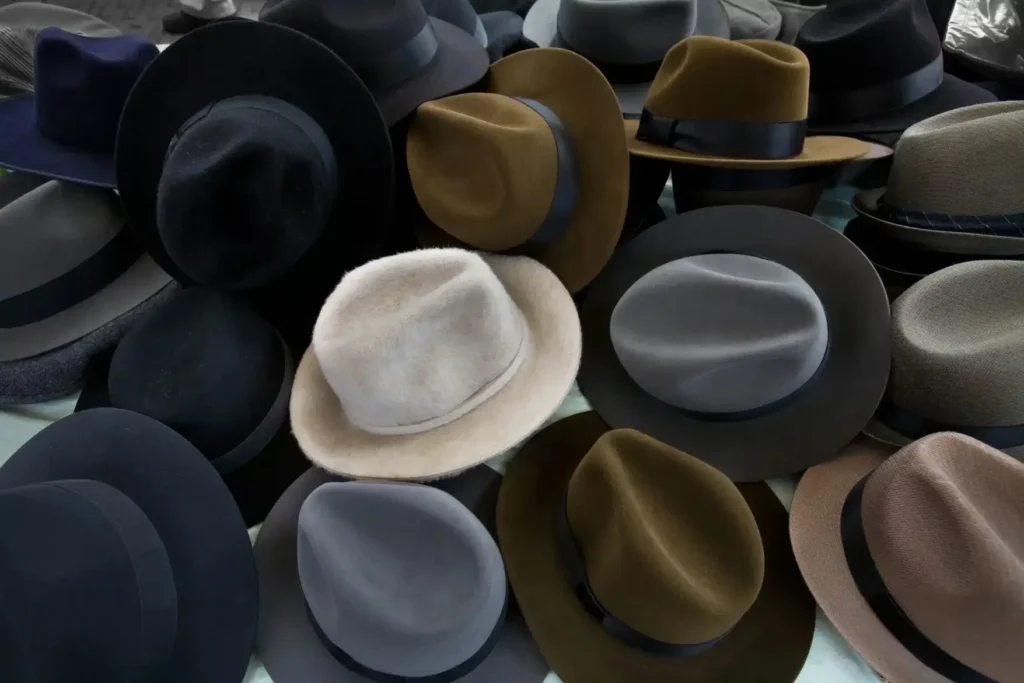
FAQs
It’s hard to choose, but the Sindhi topi and Jinnah cap carry the most national recognition. The Sindhi topi represents cultural pride, while the Jinnah cap is linked with Pakistan’s founder.
Yes, but not daily. Traditional hats are worn at weddings, cultural events, and festivals. For everyday use, youngsters generally prefer modern caps.
The best places are the local bazaars, Qissa Khwani Bazaar in Peshawar for Pakols, Sindh’s handicraft markets for topis, and Quetta’s markets for turbans. Handmade options are also available in online stores nowadays.
Yes, definitely. A lot of grooms combine sherwanis with Jinnah caps, and students usually wear Pakols with jeans or kurtas. It is a combination of heritage and contemporary fashion.
Final Thoughts
The kinds of hats in Pakistan are not mere accessories. They are the regional signatures that are skillfully crafted, proudly passed down, and worn with meaning. Each one, from the intricate embroidery of the Sindhi topi to the tough wool of the Pakol, from the graceful Jinnah cap to the daring Balochi turban, is different in its way.
Moreover, these hats are still there even after the changes in times. They come into the picture at weddings, at cultural days, and in those moments when identity is the main focus. Hats show that no matter how interconnected the world has become, Pakistan’s heritage is still intact, and sometimes, all you have to do is look at someone’s head to see it.
